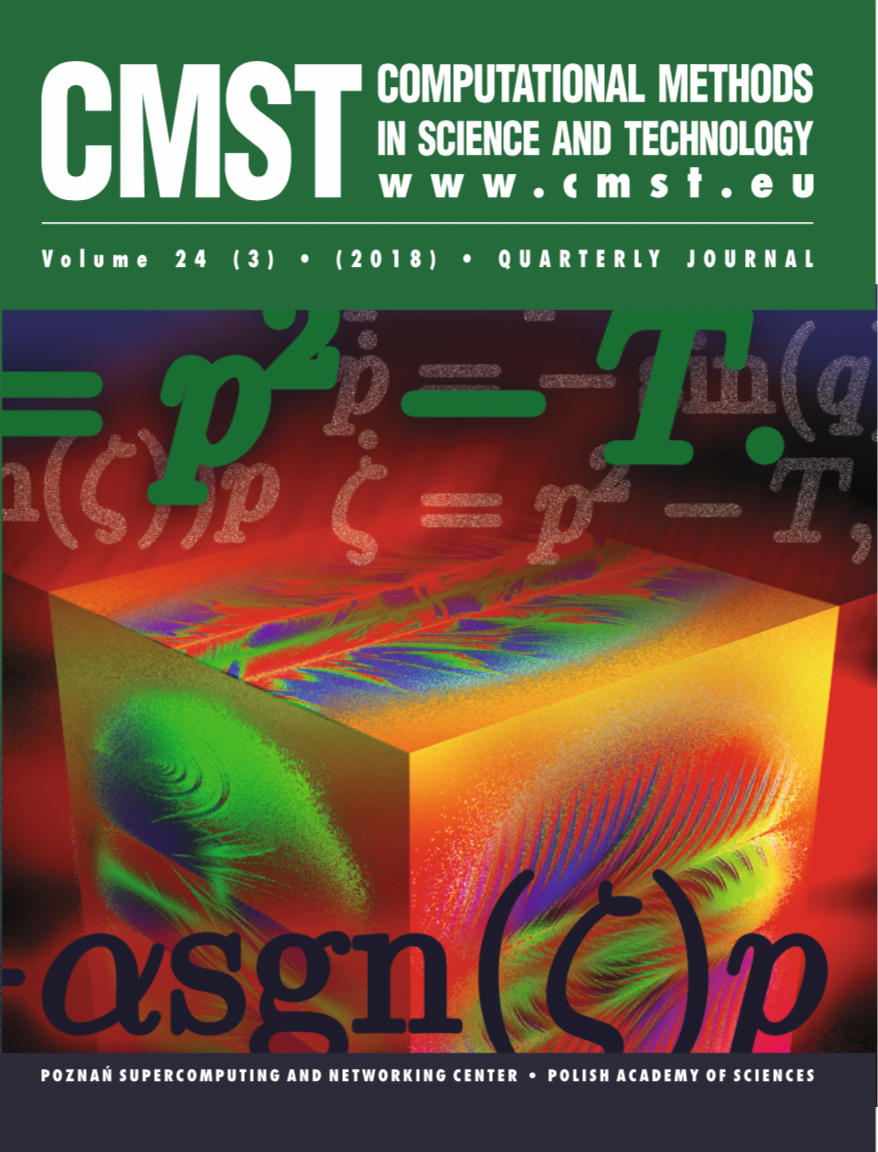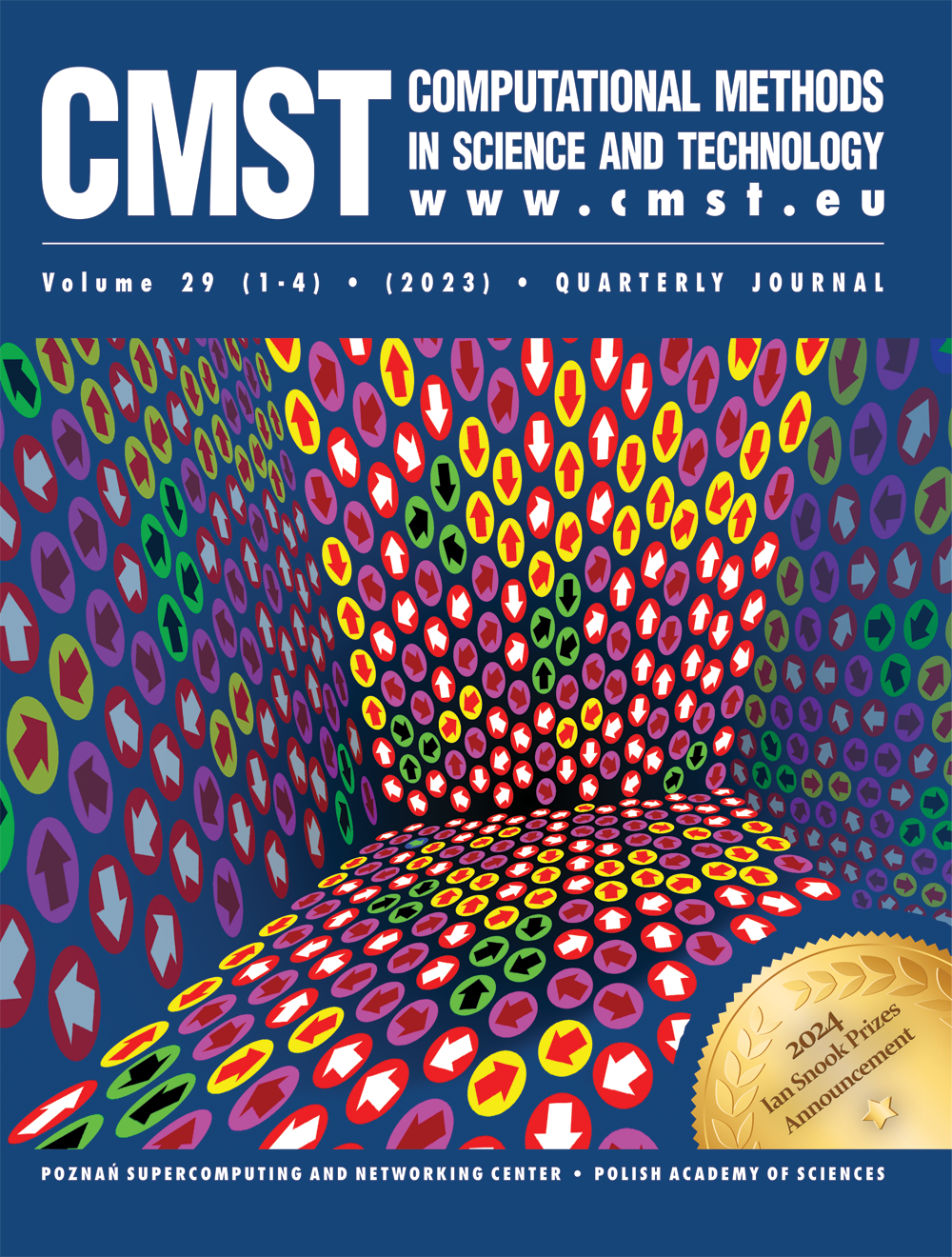Ergodicity of One-dimensional Oscillators with a Signum Thermostat
Department of Physics
University of Wisconsin-Madison Madison
Wisconsin 53706, USA
E-mail: sprott@physics.wisc.edu
Received:
Received: 28 August 2018; accepted: 25 September 2018; published online: 28 September 2018
DOI: 10.12921/cmst.2018.0000042
Abstract:
Gibbs’canonicalensembledescribestheexponentialequilibriumdistributionf(q,p,T)∝e−H(q,p)/kT foran ergodic Hamiltonian system interacting with a ‘heat bath’ at temperature T . The simplest deterministic heat bath can be represented by a single ‘thermostat variable’ ζ. Ideally, this thermostat controls the kinetic energy so as to give the canonical distribution of the coordinates and momenta {q, p}. The most elegant thermostats are time-reversible and include the extra variable(s) needed to extract or inject energy. This paper describes a single-variable ‘signum thermostat.’ It is a limiting case of a recently proposed ‘logistic thermostat.’ It has a single adjustable parameter and can access all of Gibbs’ microstates for a wide variety of one-dimensional oscillators.
Key words:
ergodicity, Gibbs’ ensemble, Nosé-Hoover system, signum thermostat
References:
[1] J.W. Gibbs, Elementary princples in statistical mechanics, Yale University Press, 1902; Reprinted Dover Publications, 2014.
[2] S. Nosé, A unified formulation of the constant tempera- ture molecular dynamics methods, The Journal of Chemical Physics 81, 511–519 (1984).
[3] S. Nosé, A molecular dynamics method for simulations in the canonical ensemble, Molecular Physics 52, 255–268 (1984).
[4] Wm.G. Hoover, Canonical dynamics: equilibrium phase- space distributions, Physical Review A 31, 1695 (1985).
[5] J. Heidel, F. Zhang, Nonchaotic behaviour in three-dimensional quadratic systems II: the conservative case, Non- linearity 12, 617–633 (1999).
[6] Wm.G. Hoover, C.G. Hoover, Microscopic and Macroscopic Simulation Techniques – the Kharagpur Lectures, World Sci- entific, 2018.
[7] G.J. Martyna, M.L. Klein, M. Tuckerman, Nosé–Hoover chains: the canonical ensemble via continuous dynamics, The Journal of Chemical Physics 97, 2635–2643 (1992).
[8] D. Kusnezov, A. Bulgac, W. Bauer, Canonical ensembles from chaos, Annals of Physics 204, 155–185 and 214, 180–218 (1992).
[9] Wm.G. Hoover, B.L. Holian, Kinetic moments method for the canonical ensemble distribution, Physics Letters A 211, 253–257 (1996).
[10] A.C. Bran ́ka, M. Kowalik, K.W. Wojciechowski, Generaliza- tions of the Nosé–Hoover approach, The Journal of Chemical Physics 119, 1929–1936 (2003).
[11] A. Sergi, G.S. Ezra, Bulgac–Kuznezov–Nosé–Hoover ther- mostats, Physical Review E 81, 036705 (2010).
[12] J.D. Ramshaw, General formalism for singly thermostated Hamiltonian dynamics. Physical Review E 92, 052138 (2015).
[13] Wm.G. Hoover, C.G. Hoover, J.C. Sprott, Nonequilibrium sys-tems: hard disks and harmonic oscillators near and far from equilibrium, Molecular Simulation 42, 1300–1316 (2016).
[14] P.K. Patra, Wm.G. Hoover, C.G. Hoover, J.C. Sprott, The equivalence of dissipation from Gibbs entropy production with phase-volume loss in ergodic heat-conducting oscillators, In- ternational Journal of Bifurcation and Chaos 26, 1650089 (2016).
[15] Wm.G. Hoover, C.G. Hoover, Singly-thermostatted ergodicity in Gibbs’ canonical ensemble and the 2016 Ian Snook Prize, CMST 22, 127–131 (2016).[16] D. Tapias, A. Bravetti, D.P. Sanders, Ergodicity of one- dimensional systems coupled to the logistic thermostat, CMST 23, 11–18 (2017).
[17] W.H. Press, S.A. Teukolsky, W.T. Vetterling, B.P. Flannery,Numerical Recipes: The Art of Scientific Computing, Cam- bridge University Press, 2007.[18] W.J. Grantham, B. Lee, A chaotic limit cycle paradox, Dy- namics and Control 3(2), 159–173 (1993).
[19] R.F. Gans, When is cutting chaotic?, Journal of Sound and Vibration 188, 75–83 (1995).
Gibbs’canonicalensembledescribestheexponentialequilibriumdistributionf(q,p,T)∝e−H(q,p)/kT foran ergodic Hamiltonian system interacting with a ‘heat bath’ at temperature T . The simplest deterministic heat bath can be represented by a single ‘thermostat variable’ ζ. Ideally, this thermostat controls the kinetic energy so as to give the canonical distribution of the coordinates and momenta {q, p}. The most elegant thermostats are time-reversible and include the extra variable(s) needed to extract or inject energy. This paper describes a single-variable ‘signum thermostat.’ It is a limiting case of a recently proposed ‘logistic thermostat.’ It has a single adjustable parameter and can access all of Gibbs’ microstates for a wide variety of one-dimensional oscillators.
Key words:
ergodicity, Gibbs’ ensemble, Nosé-Hoover system, signum thermostat
References:
[1] J.W. Gibbs, Elementary princples in statistical mechanics, Yale University Press, 1902; Reprinted Dover Publications, 2014.
[2] S. Nosé, A unified formulation of the constant tempera- ture molecular dynamics methods, The Journal of Chemical Physics 81, 511–519 (1984).
[3] S. Nosé, A molecular dynamics method for simulations in the canonical ensemble, Molecular Physics 52, 255–268 (1984).
[4] Wm.G. Hoover, Canonical dynamics: equilibrium phase- space distributions, Physical Review A 31, 1695 (1985).
[5] J. Heidel, F. Zhang, Nonchaotic behaviour in three-dimensional quadratic systems II: the conservative case, Non- linearity 12, 617–633 (1999).
[6] Wm.G. Hoover, C.G. Hoover, Microscopic and Macroscopic Simulation Techniques – the Kharagpur Lectures, World Sci- entific, 2018.
[7] G.J. Martyna, M.L. Klein, M. Tuckerman, Nosé–Hoover chains: the canonical ensemble via continuous dynamics, The Journal of Chemical Physics 97, 2635–2643 (1992).
[8] D. Kusnezov, A. Bulgac, W. Bauer, Canonical ensembles from chaos, Annals of Physics 204, 155–185 and 214, 180–218 (1992).
[9] Wm.G. Hoover, B.L. Holian, Kinetic moments method for the canonical ensemble distribution, Physics Letters A 211, 253–257 (1996).
[10] A.C. Bran ́ka, M. Kowalik, K.W. Wojciechowski, Generaliza- tions of the Nosé–Hoover approach, The Journal of Chemical Physics 119, 1929–1936 (2003).
[11] A. Sergi, G.S. Ezra, Bulgac–Kuznezov–Nosé–Hoover ther- mostats, Physical Review E 81, 036705 (2010).
[12] J.D. Ramshaw, General formalism for singly thermostated Hamiltonian dynamics. Physical Review E 92, 052138 (2015).
[13] Wm.G. Hoover, C.G. Hoover, J.C. Sprott, Nonequilibrium sys-tems: hard disks and harmonic oscillators near and far from equilibrium, Molecular Simulation 42, 1300–1316 (2016).
[14] P.K. Patra, Wm.G. Hoover, C.G. Hoover, J.C. Sprott, The equivalence of dissipation from Gibbs entropy production with phase-volume loss in ergodic heat-conducting oscillators, In- ternational Journal of Bifurcation and Chaos 26, 1650089 (2016).
[15] Wm.G. Hoover, C.G. Hoover, Singly-thermostatted ergodicity in Gibbs’ canonical ensemble and the 2016 Ian Snook Prize, CMST 22, 127–131 (2016).[16] D. Tapias, A. Bravetti, D.P. Sanders, Ergodicity of one- dimensional systems coupled to the logistic thermostat, CMST 23, 11–18 (2017).
[17] W.H. Press, S.A. Teukolsky, W.T. Vetterling, B.P. Flannery,Numerical Recipes: The Art of Scientific Computing, Cam- bridge University Press, 2007.[18] W.J. Grantham, B. Lee, A chaotic limit cycle paradox, Dy- namics and Control 3(2), 159–173 (1993).
[19] R.F. Gans, When is cutting chaotic?, Journal of Sound and Vibration 188, 75–83 (1995).



